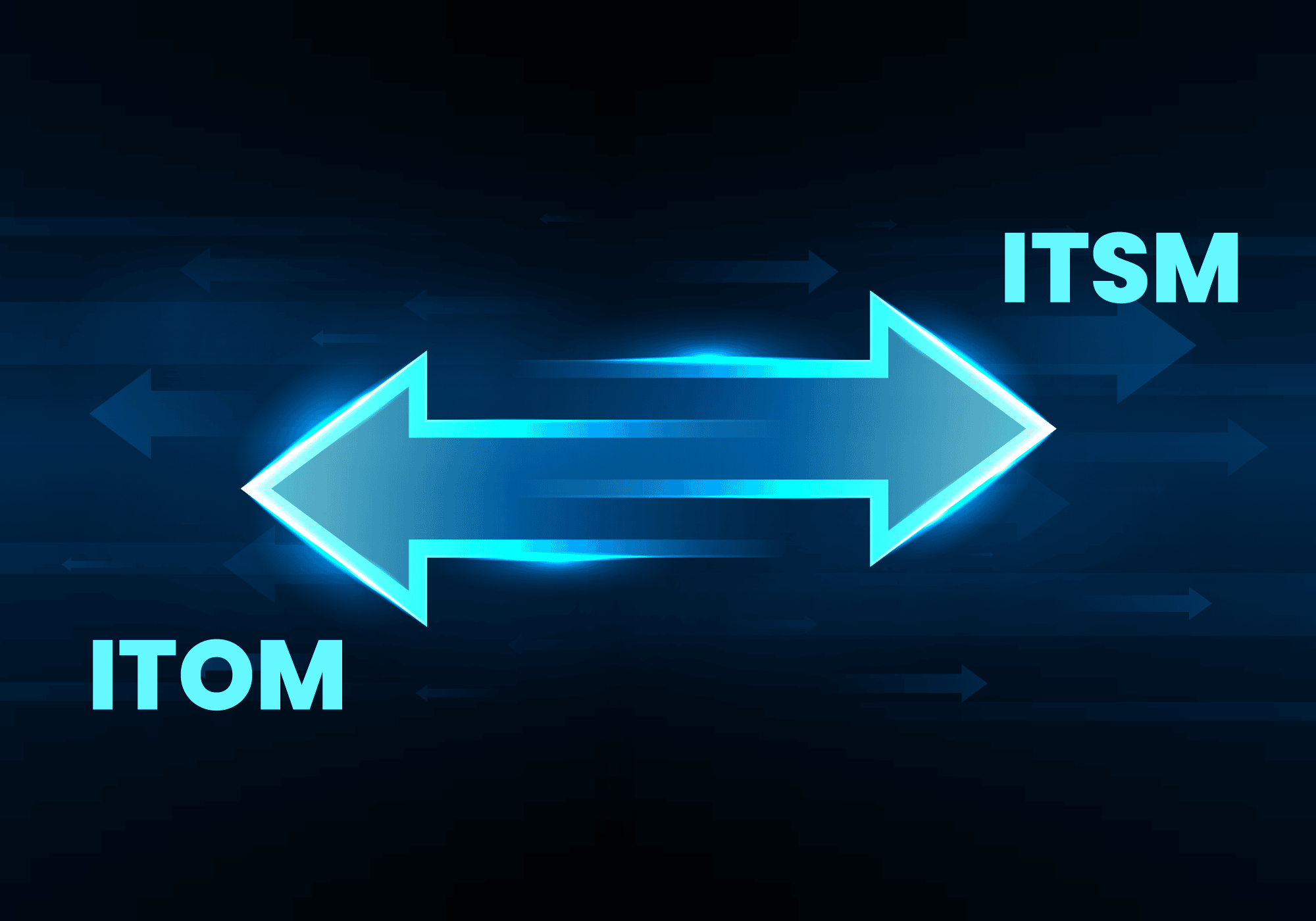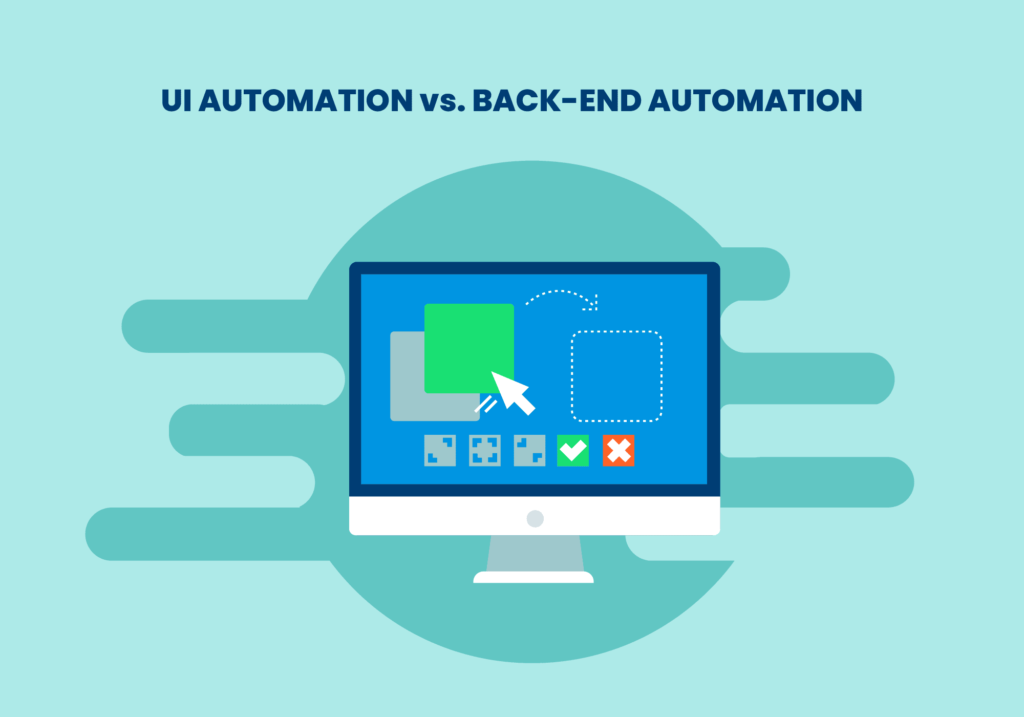Deliver the right customer experience, in real-time, with the right technology.
Integration is the key that unlocks new possibilities and fully maximises ITSM and Monitoring ITOM application potential. Figure out the tasks you’re currently doing manually and how these tasks can be automated with ITSM and ITOM integrations.
The success of a business depends on the quality of services provided to its employees and customers. Organizations resort to service management to provide services efficiently. However, ensuring best practice service management is as closely related to using the right technology as it is to designing appropriate processes. Striking the right balance comes with benefits such as responsive service delivery, a seamless customer experience, streamlined service management, smart automation, and compliance with privacy regulations.

IT services require a strategic approach that focuses on the end user. For this reason, ITSM and ITOM and ITSM integrations and strategies can help you build an IT organisation that is highly responsive to business and user needs.
At this point, IT teams must constantly learn and evolve. They need to feel valued and empowered to make a difference in the organisation. IT teams can make informed decisions about what software to implement rather than responding to rules imposed by a layered reporting structure or rigid process. Strong IT teams are critical to strong organisations, as IT teams to drive productivity and digital transformation. The team is at the centre of ITSM and ITOM, ITSM integrations, and ITOM integrations.
After focusing on the strength of the IT team, it is possible to develop unique applications and capabilities that add value to the organisation. No matter how reputable the source is, “copying and pasting” another organisation’s standards and hoping they will work in your unique environment is insufficient. Successful IT teams build their approach to systems like ITSM and ITOM, but they are careful to consider how to adapt processes that will resonate with their customers.
What is ITSM?
IT service management, also known as ITSM, refers to the strategy behind the way an organisation delivers IT services to its end users. Technologies, processes, and people are important parts of ITSM.
ITSM focuses on understanding and meeting end-user needs. This ranges from designing IT systems with effective demand management to deploying processes, hardware, and software that enhance services. ITSM activities make it possible to grow and develop IT systems to meet evolving expectations and technologies.
What is ITOM?
ITOM is a set of applications used to maintain, manage and measure information technology operations more efficiently. The solution family includes topics such as provisioning, capacity management, performance and availability monitoring of system/network devices, automation, and management of IT processes.
What are ITSM and ITOM Features?
ITSM and ITOM have different and various features. These features are as follows:
- Real-Time: Thanks to ITSM and ITOM, you can receive real-time notifications via communication applications.
- Vendor Independent: Communication applications are integrated with software and become vendor independent.
- Collaborative: ITSM and ITOM are multi-channel integration systems for collaborative event and event management.
- Marketplace: ITSM and ITOM provide hundreds of ready-to-use automation and integration bots.
- Cloud: ITSM and ITOM can be used for Native cloud applications and integrations.
- iPaaS: iPaaS allows for standardisation of how applications are integrated into an organisation.
- AI and Machine Learning: ITSM and ITOM offer continuous machine learning models on the go.
You can make the best of your application integrations with ITSM and ITOM.

Integrating ITSM and ITOM
ITSM and ITOM integrations are very important for the independence and security of applications. ITSM and ITOM integrations have a certain process. These processes are described as follows:
- Service Request Management: Request management is a repeatable procedure for handling a wide variety of customer service requests, such as application access requests, software enhancements, and hardware updates. The service request workflow often involves recurring requests and benefits greatly from providing information to customers and automating certain tasks.
- Knowledge Management: Knowledge management is the process of creating, sharing, using, and managing an organisation’s knowledge and information. It refers to a multidisciplinary approach to achieving corporate goals by making the best use of knowledge.
- IT Asset Management: IT asset management is the process of ensuring that an organisation’s assets are accounted for, distributed, maintained, upgraded, and timely disposed of. Simply put, it is to ensure that the tangible and intangible assets in your organisation are tracked and used.
- Incident Management: Incident management is the process of responding to an unplanned event or service interruption and returning the service to a working state. With all the software services that organisations rely on today, there are more potential points of failure than ever before. This process should therefore be ready to respond and resolve issues quickly.
- Problem Management: Problem management is the process of identifying and managing the causes of incidents in an IT service. Problem management is not just about finding and fixing incidents. It is also about identifying and understanding the underlying causes of an event, as well as determining the best method to eliminate the root causes.
- Change Management: Change management ensures that standard procedures are used to efficiently and quickly handle all changes in the IT infrastructure, whether it is introducing new services, managing existing ones, or solving problems in code. Effective change management provides context and transparency to avoid bottlenecks while minimising risk.
So, what are the integration use cases that process these processes and ensure that the applications are independent?
Integration Use Case
There are three basic examples of ITSM and ITOM use cases. These examples are explained in titles.
- Autom Mate Communication Apps
Autom Mate Communication Applications integration provides easy integration with the most popular ITSM tools such as ManageEngine, 4me, Jira, Micro Focus, ServiceNow, and more. - A New Channel of Communication
For users who do not want to access IT services through a new channel, all IT services can be offered via WhatsApp, Slack, Ms Teams, WeChat and similar communication applications. - Password Reset Process
Processes that require quick action, such as password resets, are automated so that users can enjoy IT services with the highest satisfaction.
Integrations and Automations in the Same Platform: Meet Autom Mate
You can also be informed about critical notifications in seconds through your preferred applications. Avoid wasting time, resources, and reputation with Autom Mate. Autom Mate, an automatic notification service, provides instant notification of notifications from preferred applications with voice calls, SMS, WhatsApp, and mail alerts.
In addition, Autom Mate has collaborations with various applications such as ServiceDesk Plus WhatsApp, 4me MS Teams, and Twilio. You, too, can join the world of Autom Mate and enjoy being fast and free!





